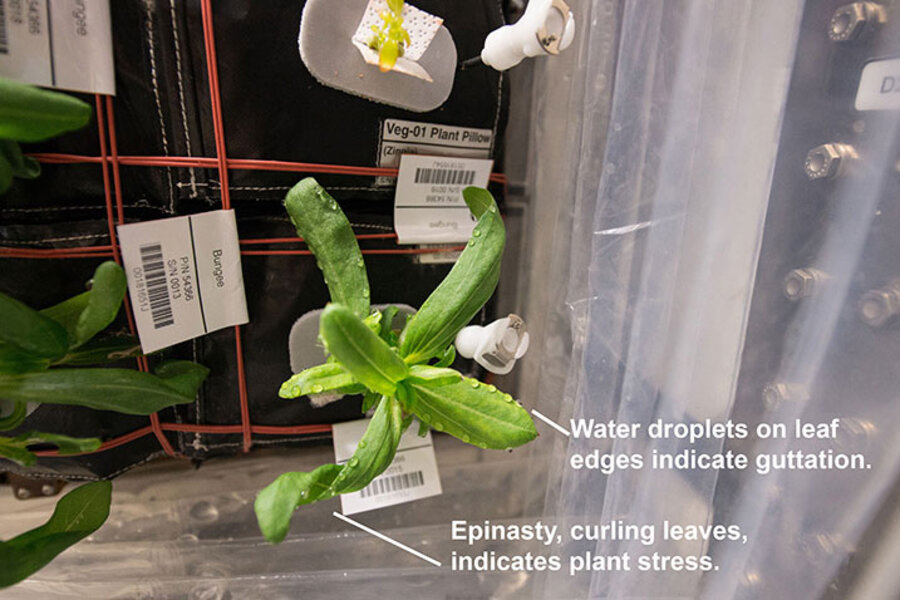Zinnias bloom on space station: What does it take to grow plants in space?
Loading...
Before American astronaut Scott Kelly saw his zinnia plants blossom aboard the International Space Station (ISS) a couple of days ago, the path to successful space gardening for NASA was trying.
There was mold, drought, and flooding in the roots. There were gardening guidelines, urgent, 4 a.m. phone calls and distressed tweets. Some plants didn’t make it and had to be clipped off.
All the commotion over a tiny space garden? It's justifiable, considering that successful gardening on the ISS today as part of a NASA experiment called "Veggie" will help astronauts produce their own fresh fruits and vegetables on a NASA mission to Mars in a couple of decades.
“The unexpected turns experienced during this Veggie run have actually offered bountiful opportunities for new learning and better understanding of one of the critical components to future journeys to Mars,” NASA wrote Saturday in a blog post.
The zinnias are growing from trays of water with bags of seeds in a type of calcined clay used on baseball fields to increase aeration to help the plants grow. The plants are lit by LED lights and fertilized by an automatic release within a chamber wrapped in plastic.
NASA's Veggie team has learned that the high-speed fans that were used to keep the zinnias dry after high humidity caused a mold breakout, also have an unintended consequence of drying out the plants, requiring more frequent watering than anticipated.
In late December, Mr. Kelly, who took over the garden from Kjell Lindgren, an American astronaut who returned to earth from the ISS on Dec. 18, reported that the zinnias needed water – well before the next watering was scheduled by the Earth-based Veggie design team.
“You know, I think if we’re going to Mars, and we were growing stuff, we would be responsible for deciding when the stuff needed water,” he told the Veggie team on Earth.
“Kind of like in my backyard, I look at it and say ‘Oh, maybe I should water the grass today.’ I think this is how this should be handled,” reported Kelly, in a defiant move that made him, officially, an “autonomous gardner,” as NASA characterized it.
The stress of humidity and then dryness overwhelmed two of the zinnia plants, which died and were clipped and stored in the freezer to be returned to Earth for studying. The remaining two zinnia plants blossomed, as Kelly reported on Twitter Saturday.
The zinnia blossoms – not the first flowers to grow in space – are not only an important precursor to future, cosmic food gardens, but the brightly colored flowers may also benefit astronauts’ mental health and morale, says NASA.
“Plants can indeed enhance long duration missions in isolated, confined and extreme environments – environments that are artificial and deprived of nature,” said Alexandra Whitmire, a behavioral health scientist in the NASA Human Research Program, in a NASA statement.
“While not all crew members may enjoy taking care of plants, for many, having this option is beneficial,” said Dr. Whitmire.
She explained that studies from other isolated and confined environments, such as Antarctic stations, have shown that plants and fresh food are psychologically beneficial in situations where there is little stimuli.







